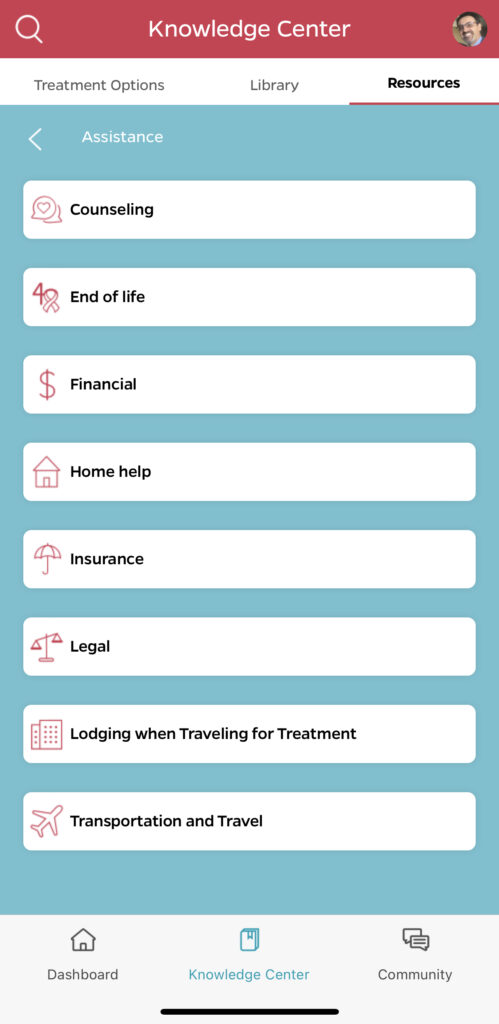Revolutionizing Treatment for Breast Cancers: Breakthrough Study Sparks New Hope
August 15, 2023
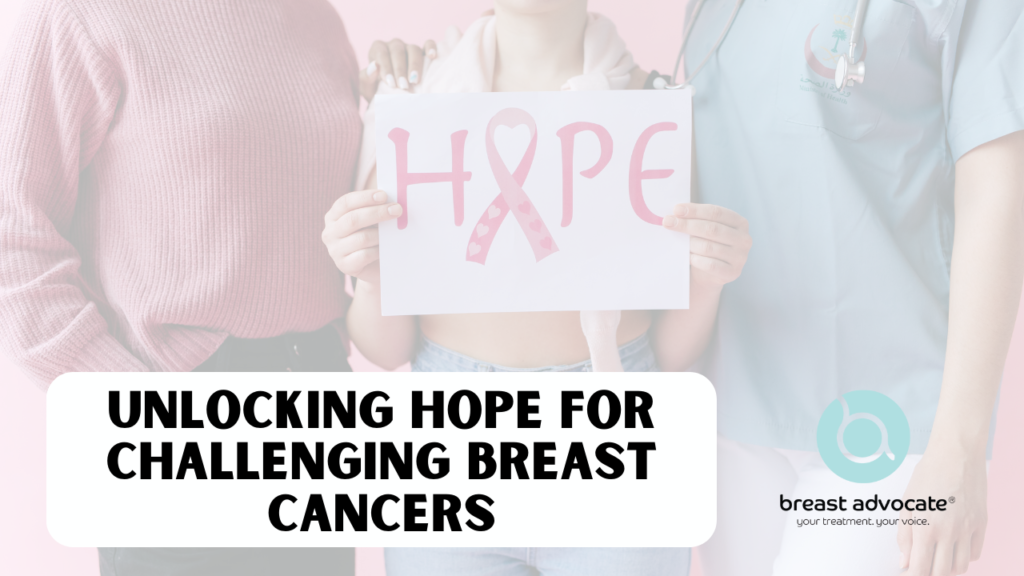
Researchers from LSU Health (New Orleans School of Medicine), the University of Rochester and Cellestia Biotech AG (a biopharmaceutical company in Switzerland) have unveiled an innovative treatment for treatment-resistant breast cancers. Their study, published in MDPI Cancers, presents exciting findings that could transform the landscape of breast cancer treatment.
Study Findings
The study focuses on two types of breast cancers: estrogen-receptor positive (ER+) and triple-negative breast cancers (TNBC). These cancers can be challenging to treat due to resistance to standard therapies. The research introduces a new approach that combines an experimental oral drug with standard-of-care medications. It is effectively reversing hormone resistance and boosting treatment effectiveness.
The experimental oral drug, known as CB-103, is a product of Cellestia Biotech AG. It works by inhibiting Notch receptors, which play a vital role in transmitting information from cell surfaces to genes. Notch signaling is known to be involved in various cancers, including breast cancers. CB-103 directly targets gene regulation by Notch, setting it apart from previous drugs in the same class. This Innovative treatment approach for treatment-resistant breast cancers also comes with a more favorable safety profile compared to older drugs.
What’s next?
Senior author Lucio Miele, MD, PhD explained, “CB-103 is a next-generation, orally active, clinical-stage drug that, unlike older drugs, directly targets gene regulation by Notch and offers a much-improved toxicity profile.”
Samarpan Majumder, PhD and senior author in the study, emphasized the safety and efficacy of CB-103 in advanced malignancies. “CB-103 has been safe and well-tolerated, showing minimal gastrointestinal toxicity, unlike previous Notch inhibitors,” Dr. Majumder stated.
The study’s significance lies in its potential to overcome treatment resistance. Despite advancements in breast cancer treatment, endocrine resistance still emerges in estrogen-receptor positive breast cancers. Current second-line therapies have limitations and potential toxicities, while third-line treatments are often ineffective. Triple-negative breast cancer, a particularly aggressive subtype, poses a significant challenge, affecting a significant percentage of breast cancer patients.
Plan for Clinical Trials?
“Our translational data will be serving as a foundation for planned clinical trials. We will combine CB-103 with anti-estrogen therapy in ER+ breast cancers with taxanes like taxol or docetaxel in TNBC” adds Dr. Majumder.
The collaborative study involved researchers from LSU Health New Orleans, Cellestia Biotech AG, and the University of Rochester. The research was funded by Cellestia Biotech and the Cancer Crusaders Chair at LSU Health New Orleans. With this promising breakthrough, the future of breast cancer treatment looks brighter, offering hope to patients with treatment-resistant breast cancers.
New Research Offers Hope for Breast Cancer Patients – Mortality Rates Show Steady Decline
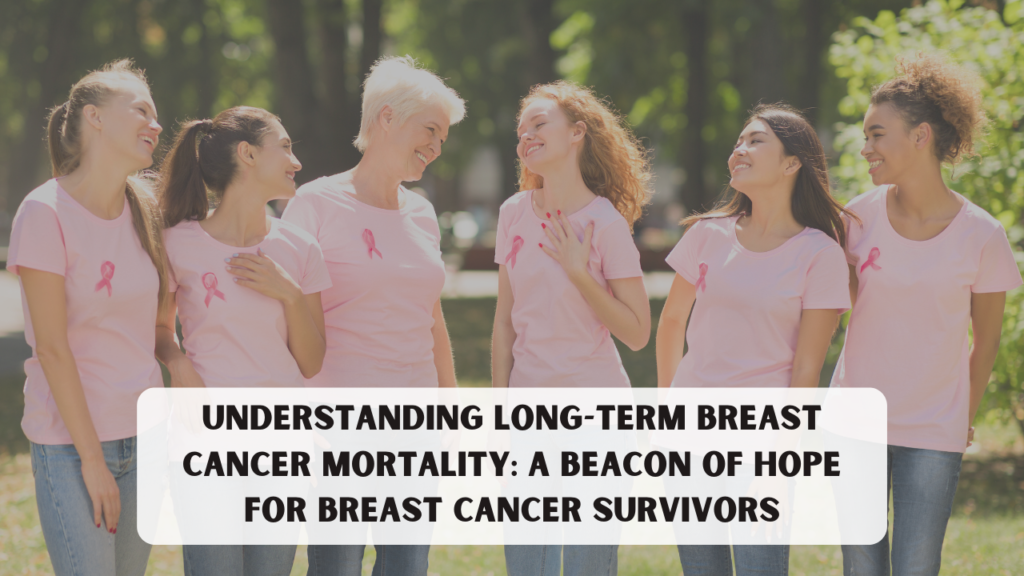
A recent population-based study provides valuable insights into long-term breast cancer mortality rates. The research sheds light on the improving prognosis for breast cancer survivors. Advancements in treatment and care have led to increasingly better outcomes over the years.
Favorable Trend in Mortality Rates
The study analyzed data from women in England diagnosed with early invasive breast cancer between 1993 and 2015. The annual breast cancer mortality rate was the highest during the five years following diagnosis. After that, mortality showed a steady decline.
Researchers further delved into each calendar period of diagnosis 1993-1999, 2000-2004, 2005-2009, and 2010-2015. The annual breast cancer mortality rates decreased with each successive calendar period. This indicates a clear trend of improvement in breast cancer management and treatment, leading to higher chances of survival for patients diagnosed with breast cancer.
Decline in Five-Year Mortality Risk
A key finding from the study is the significant decrease in the five-year breast cancer mortality risk over time. For women diagnosed between 1993-1999, the risk was 14.4%. For those diagnosed between 2010-2015, the risk dropped significantly to 4.9%.
The researchers also considered various patient and tumor characteristics among women diagnosed in 2010-2015. They discovered that the cumulative five-year breast cancer mortality risk varied substantially based on these factors. Overall, the 5 year risk of death from breast cancer in patients with a recent diagnosis was under 3% for 62.8% of women. However, the risk remained 20% or higher for 4.6% of women.
Study Take-Aways
This study shows the substantial improvement in prognosis for women with a diagnosis of early invasive breast cancer that has been made since the 1990s. Advancements in treatment modalities are having a favorable impact.
These findings will reassure most women treated for early stage breast cancer that they are likely to become long term survivors. They can also be used to identify and further study the groups of women for whom the risk of breast cancer mortality remains substantial.
Early Detection Remains Crucial
The great news is that the overall outlook for breast cancer outcomes continues to improve. However, this study also underscores the importance of early detection to ensure diagnosis occurs at the earliest stage possible.
How Weight (BMI) Impacts Breast Cancer Risk in BRCA Mutation Carriers

Individuals with BRCA1 and BRCA2 gene mutations put people at a higher risk of developing breast and ovarian cancer. A recent research article by Bhardwaj et al., sheds light on the impact of Body Mass Index (BMI) on breast cancer risk for BRCA mutation carriers.
Obesity, (having a BMI of 30 or higher), is a known risk factor for breast cancer among women in the general population after menopause. However, for women with a BRCA1 or BRCA2 mutation, the relationship between BMI and breast cancer risk has been unclear due to conflicting findings in previous studies.
How a High BMI impacts Breast Tissue
In the study, researchers investigated the impact of BMI on the breast tissue of BRCA mutation carriers. They found a positive correlation between BMI and DNA damage in normal breast epithelial cells in high BMI individuals. In other words, a higher BMI increases DNA damage, potentially also increases the risk of breast cancer.
The researchers further explored the mechanisms behind this link. They discovered that obesity-associated factors, such as estrogen biosynthesis, are activated in the breast adipose microenvironment of BRCA mutation carriers. These alterations affected neighboring breast epithelial cells, contributing to increased DNA damage.
Benefit of Estrogen Therapy
Estrogen, a hormone known to play a significant role in breast cancer development, is influenced by obesity-associated factors. In breast tissue explants cultured from BRCA mutation carriers, blocking estrogen biosynthesis or estrogen receptor activity reduced DNA damage. This suggests that targeting estrogen may have a protective effect against breast cancer in this higher-risk population.
Potential Targeted Therapies
The study also explored the impact of other obesity-associated factors, such as leptin and insulin. These factors increase DNA damage in BRCA heterozygous epithelial cells. However, inhibiting the signaling of these factors with specific interventions decreased DNA damage. This opens up potential avenues for reducing breast cancer risk in BRCA mutation carriers through targeted therapies.
To strengthen their findings, the researchers conducted experiments on mice. They found that increased adiposity (body fat) was associated with mammary gland DNA damage and increased tumor development, further supporting the connection between BMI and breast cancer risk.
The results of this study support the link between elevated BMI and breast cancer development in BRCA mutation carriers. Therefore, maintaining a healthy body weight is particularly important for reducing breast cancer risk in this population. Additionally, pharmacologically targeting estrogen or metabolic dysfunction may offer possible preventive strategies.
This study brings us valuable insights into reducing breast cancer risk for individuals with BRCA mutations. By maintaining a healthy weight, avoiding processed foods, and exploring targeted interventions, BRCA mutation carriers can take proactive steps towards better breast health.
Encouraging Rise in Breast Cancer Survival Rates
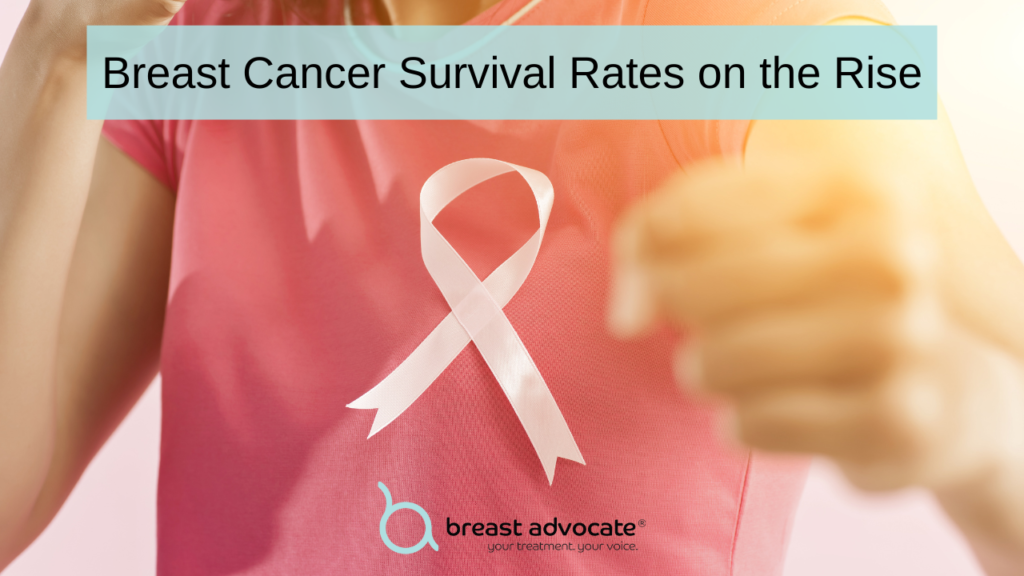
A recent study published in Nature shows breast cancer survival rates have improved significantly over the past few decades. Women diagnosed since 2010 have a much lower risk of dying than those diagnosed in the 1990s. Thanks to advancements in medical research, improved screening methods, and more effective treatments, patients now have a significantly higher chance of surviving after a breast cancer diagnosis. Research shows that the number of women who die from their disease has decreased by two-thirds. This progress represents a transformative shift in the work against breast cancer, offering some hope and renewed optimism to patients and their loved ones.
Early Detection: The Power of Screening
One of the primary factors contributing to the increase in breast cancer survival rates is early detection. Regular mammograms and other screening methods allow the identification of breast cancer at its earliest stages, often before symptoms even arise. Early detection allows for prompt intervention and treatment, leading to higher survival rates.
Awareness campaigns and education initiatives also play a vital role in encouraging women to have regular screenings, leading to earlier diagnoses and improved outcomes. According to Naser Turabi, director of evidence and implementation at Cancer Research UK (CRUK) in London, the decline in the mortality rate wasn’t unexpected. “Research is incredibly important to determine the success of treatments,” he says, and this study will help people to make better-informed decisions about their treatment.
Advancements in Treatment: Targeted Therapies and Precision Medicine
Significant advancements in treatment options have revolutionized breast cancer care. Targeted therapies, such as hormone therapy, HER2-targeted therapy, and immunotherapy are designed to attack specific characteristics of cancer cells. This maximizes the effectiveness of the treatment while minimizing side effects. Additionally, chemotherapy regimens and radiation therapy have become more precise and tailored to individual patients. This limits damage to healthy cells as much as possible and improves overall treatment outcomes. Surgical techniques have also advanced, with improved breast-conserving surgeries and reconstructive options also available to patients.
Collaborative Efforts
The collaborative efforts of researchers, healthcare professionals, and patient advocacy organizations have further propelled progress in breast cancer survival rates. Increased funding for research has led to breakthrough discoveries in understanding the biology of breast cancer, allowing for the development of innovative treatments.
“Involving patients was crucial to the study,” according to Carolyn Taylor, lead author of the study and an oncologist at the University of Oxford, UK. To direct their research, the scientists appointed two patient representatives. “They looked at the analyses and gave comments and suggestions throughout the study. And they helped us to interpret the results in the way that patients can understand.”
Improved coordination and multidisciplinary approaches among healthcare teams have enhanced the quality of care provided to patients, ensuring that they receive comprehensive treatment plans tailored to their specific needs.
A Brighter Future
While there is still much work to be done, the significant increase in breast cancer survival rates represents a remarkable achievement in the field of oncology. It highlights the power of early detection, improved treatments, and the tireless dedication of researchers and healthcare professionals. As we continue to advance in our understanding of breast cancer and refine treatment approaches, there is hope for an even brighter future: a future where breast cancer becomes a manageable and survivable disease for all.
AI May More Accurately Predict Breast Cancer Risk
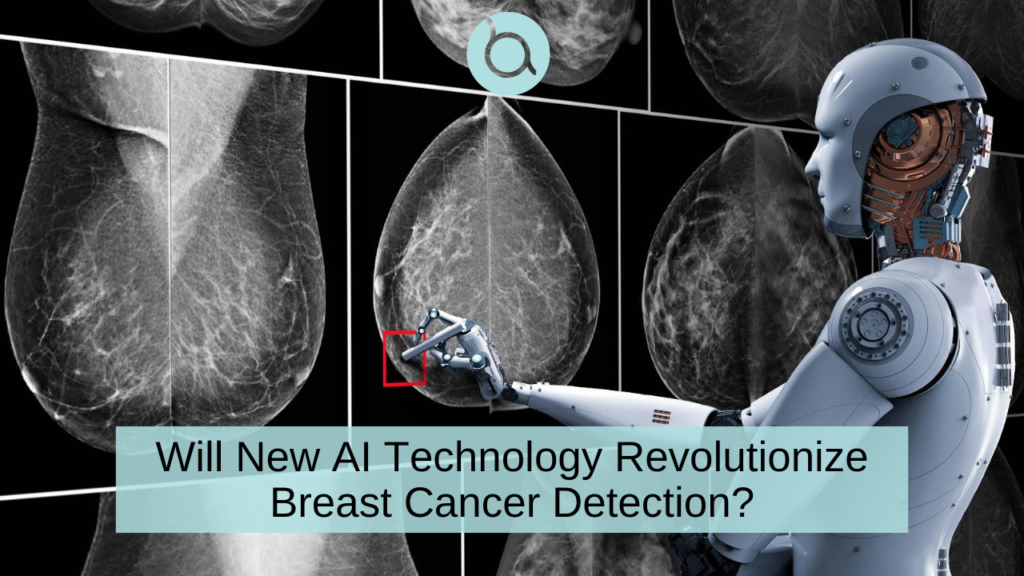
Early detection plays a crucial role in improving breast cancer survival rates and treatment outcomes. The integration of artificial intelligence (AI) into radiologic imaging, like mammograms and MRIs, is revolutionizing breast cancer diagnosis.
In a recent study, artificial intelligence (AI) outperformed the standard clinical model for predicting the five-year risk for developing breast cancer.
AI Study of Screening Mammograms
Lead investigator, Dr. Vignesh Arasu, used data from screening mammograms at Kaiser Permanente in Northern California in 2016 that showed no visible evidence of cancer. “We selected from the entire year of screening mammograms performed in 2016, so our study population is representative of communities in Northern California.”
Five different artificial intelligence (AI) algorithms were used to generate risk scores for developing breast cancer over the five-year period using the 2016 screening mammograms. The risk scores were then compared to the Breast Cancer Surveillance Consortium (BCSC) clinical risk score as well as to one another.
“All five AI algorithms performed better than the risk model for predicting breast cancer risk at 0 to 5 years,” Dr. Arasu said. “This strong predictive performance over the five-year period suggests AI is identifying both missed cancers and breast tissue features that help predict future cancer development. Something in mammograms allows us to track breast cancer risk. This is the ‘black box’ of AI.”
Advancements in AI for Breast Cancer Diagnosis
AI technology has made significant strides in recent years, bringing a paradigm shift in the field of breast cancer detection.
- Mammograms: AI-based systems can analyze mammographic images and assist radiologists in detecting early-stage abnormalities.
- Breast MRI: AI algorithms can analyze MRI images to identify suspicious areas, helping radiologists pinpoint potential cancerous lesions more accurately. By combining the power of AI with radiologic testing, medical professionals can achieve comprehensive and reliable breast cancer diagnosis.
Benefits of using AI
The integration of AI in breast cancer diagnosis offers numerous benefits:
- AI algorithms can assist in reducing false negatives and false positives, which are a persistent challenge in conventional mammography.
- AI can significantly enhance the efficiency and speed of breast cancer detection.
- AI can help bridge the expertise gap in breast cancer diagnosis.
Challenges and Ethical Considerations
While AI brings tremendous promise, it also raises important challenges and ethical considerations.
One critical challenge is the need for robust and diverse datasets to train AI algorithms effectively. Transparency and interpretability of AI algorithms are also crucial. Understanding the decision-making process of AI systems is vital for radiologists and patients to trust and validate the results.
We must also address issues surrounding patient privacy and data security. AI systems require access to extensive patient data, including medical records and imaging studies, which must be protected to safeguard patient confidentiality.
Striving for Better Patient Outcomes
AI algorithms can provide radiologists with powerful tools to improve accuracy, efficiency, and speed in diagnosing breast cancer lesions. By reducing false negatives and false positives, AI can also improve sensitivity and specificity, leading to better patient outcomes.
New Mammogram Recommendations: What You Need to Know
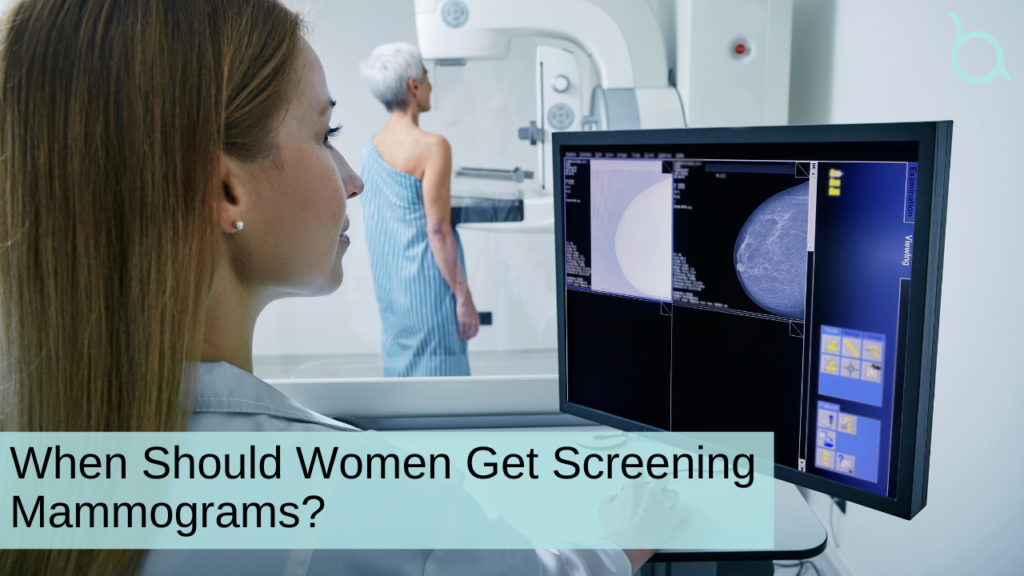
The U.S. Preventive Services Task Force, an expert panel that develops recommendations for preventive care, has suggested that all women begin routine breast cancer screening mammograms at age 40, rather than the previous recommendation of age 50. Although some other medical organizations support annual mammograms, the panel continues to advise spacing the screenings at two-year intervals.
Will this impact you?
All “cisgender women and other people assigned female at birth” who have an average risk for breast cancer and do not exhibit any troubling symptoms that might indicate breast cancer should follow these guidelines.
However, this doesn’t apply to a women who has already had breast cancer, has a genetic mutation that increases breast cancer risk, has received high-dose radiation to the chest, or has had breast lesions found in previous biopsies.
Why did the task force change its screening mammogram recommendations?
The panel’s updated recommendations were based on more recent and inclusive scientific research on breast cancer in women under 50. The panel commissioned a review of screening techniques and modeling studies to reach its conclusions even though no new clinical trial data were available and only one older trial included a significant proportion of black women. High death rates among black women were also considered by the experts: the mortality rate for black women with breast cancer in their 40s is double that of white women.
Why aren’t yearly screening mammograms recommended?
The panel’s research found no advantage to annual screening mammograms over biennial scans. According to the panel, annual mammograms are no more effective at finding stage 2 cancer and other dangerous tumors, and biennial screenings (a mammogram every other year) are thought to offer a better benefit-to-harm ratio.
Does insurance cover screening mammograms?
The law requires insurance companies to fully cover mammograms for women ages 40 to 74 who have an average risk of developing breast cancer.
For more news about breast cancer screening, click here.
Ultra-Processed Foods and Breast Cancer: Is There a Link?
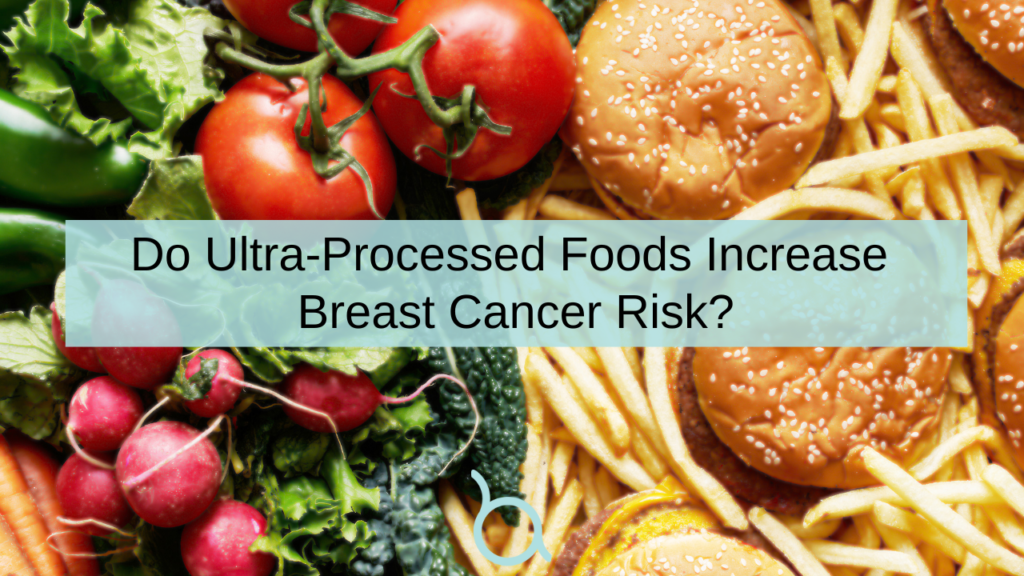
As much as 40% of cancers are estimated to be linked to lifestyle risk factors such as smoking, alcohol use, physical inactivity and diet. Several studies suggest a link between ultra-processed foods (UPFs) and an increased risk of breast cancer. A recent study published in the journal Clinical Nutrition supports a clinically relevant association between UPFs and an increased risk in several different cancers including: breast, colorectal, prostate, pancreatic, chronic lymphocytic leukemia and central nervous system tumors.
What are ultra-processed foods?
Ultra-processed foods are foods that have undergone extensive processing and contain a high amount of added sugars, fats, and other additives. Examples of ultra-processed foods include soda, energy/sport drinks, fast food, processed meats like deli meets and hot dogs, frozen dinners, chips, crackers, and sugary cereals. These foods are often high in calories and low in nutrients, making them a poor choice for a healthy diet.
Ultra-processed foods and breast cancer
Several studies suggest that consuming a diet of highly processed foods may increase the risk of developing breast cancer. Women who consume a diet high in ultra-processed foods have a higher risk of developing breast cancer than those who follow a diet rich in fruits, vegetables, and whole grains. The reason for this increased risk is thought to be due to the high levels of additives and preservatives found in ultra-processed foods. These additives have been linked to inflammation, oxidative stress, and other factors that can contribute to the development of cancer.
Nutritional tips for a healthier diet
To reduce the risk of developing cancer as much as possible, it is essential to consume a diet rich in whole foods and low in ultra-processed foods. Here are some tips to help you eat more healthily:
- Focus on whole foods: Fill your plate with fruits, vegetables, whole grains, and lean proteins.
- Read labels: When shopping for packaged foods, be sure to read the labels carefully. Look for products that are low in added sugars, saturated fats, and other unhealthy additives.
- Cook at home as much as you can: Preparing meals at home allows you to make sure the ingredients are healthy. Experiment with new recipes and try to incorporate more whole foods into your diet.
- Limit processed foods: While it may be difficult to eliminate processed foods entirely, try to limit your intake as much as possible. Choose healthier snacks like fruits, nuts, and seeds, and choose whole-grain options when buying bread, pasta, and other grains.
While the link between ultra-processed foods and breast cancer is still being studied, it is essential for you and your family to eat a healthy diet rich in whole foods to reduce the risk of developing cancer.
Hormonal Birth Control May Increase Your Risk of Breast Cancer
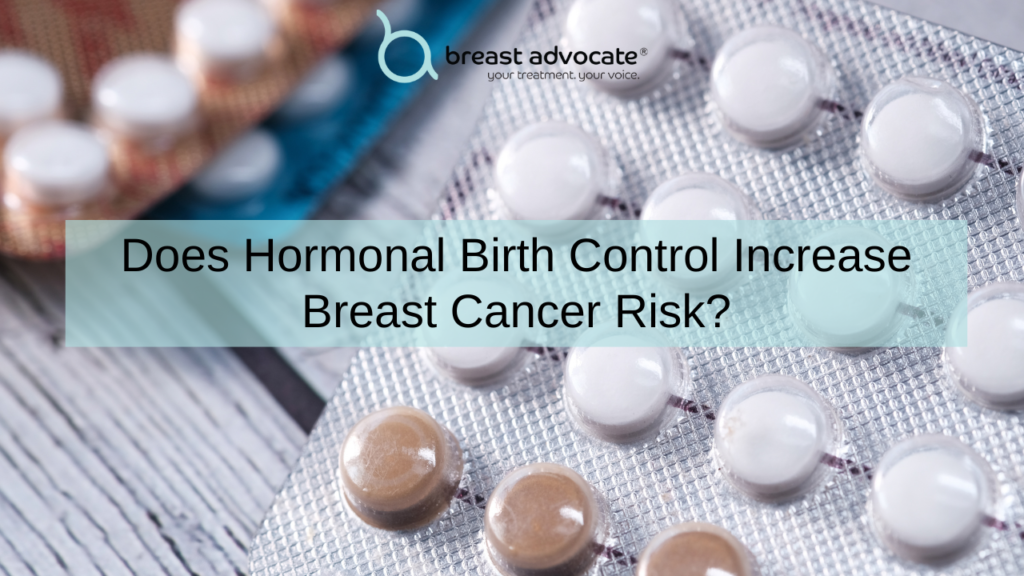
For decades, researchers have looked at how hormonal birth control affects the risk of developing breast cancer. Studies show that using birth control that contains estrogen and progesterone increases your risk of developing breast cancer.
The use of the different types of hormonal contraceptives has changed over the last 10 years. More women are now using progesterone-only preparations, both as oral (eg “mini pill”) and as long-acting formulations such as injectables, implants, and progesterone-releasing coils, or intrauterine devices (IUDs).
New research shows the risk of developing breast cancer is increased further by using progestogen-only contraceptives. A recent study published in PLOS Medicine looked at almost 30,000 women who received a diagnosis of invasive breast cancer between 1996 and 2017. Study participants were compared to evaluate if women who took progesterone-only contraception had a higher risk of developing the disease. The study found that women who used progesterone-only contraception had a slightly increased chance of developing breast cancer. This risk was 20-30% higher than women who took combined (estrogen and progesterone) hormonal contraception.
Should You Use the Birth Control Pill or Other Types of Hormonal Contraception?
The actual risk of getting breast cancer when you are young is very small. When you are 20, your risk of getting breast cancer is less than 1 in 1000. When you are 40, your risk increases to 1 in 65 women. The risk increases further with increasing age. This is because as we get older, cells in our body are more likely to mutate as they divide. This Higher rate of “faulty” cell division is a normal consequence of aging. A woman’s overall lifetime risk for developing breast cancer is about 1 in 8. Women and men who are born with certain types of gene mutations (eg in the BRCA gene) are at increased risk of developing breast cancer (and other cancers) compared to people who do not carry those gene mutations.
Should You Stop Using Hormonal Contraception Because of the Risk of Breast Cancer?
So, should you stop using your progesterone-only pill, implant, or IUD? This is an important study but it sounds scary and we need to put it in perspective. A 20-30% increase in relative risk may sound like about 1 in 4 women who use this type of contraception will ultimately get breast cancer. That is NOT what these results actually mean.
In reality, the relative increase in breast cancer risk means that if you use progesterone-only contraception for 5 years, the risk of getting breast cancer increases from about 8 in 100,000 between the ages of 16 and 20 years, to about 265 in 100,000 between the ages of 35 to 39 years.
While the results of this study are important to know, they must be viewed in the context of the well-established benefits of contraceptive use during a woman’s reproductive years. Women shouldn’t make a decision about whether to use hormonal contraception or what type specifically, based on this study alone.
Please consult with your doctor to further discuss the pros and cons of the different types of hormonal contraception available, and to help you make the best decision for you.
Breast Cancer Vaccine Targeting Triple-Negative disease (TNBC) Moves Closer to Becoming a Reality
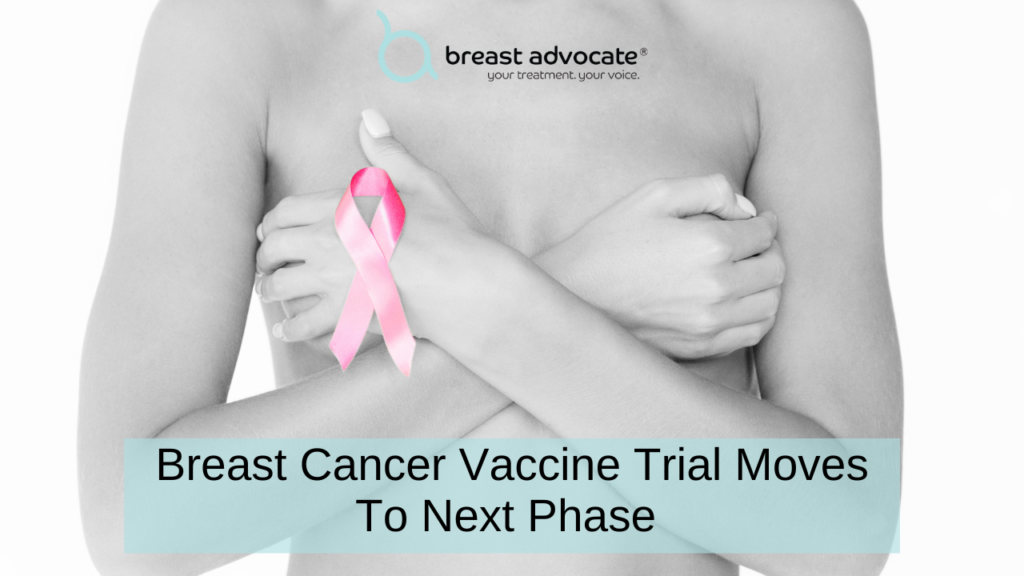
Researchers at Cleveland Clinic have launched the next phase of their evaluation of a novel breast cancer vaccine that prevents triple-negative breast cancer (TNBC). Triple-negative breast cancer is the most aggressive form of the disease, accounting for roughly 10-15% of all breast cancers.
The new phase 1b study will enroll cancer-free women at high risk of developing breast cancer
who have volunteered to undergo a prophylactic mastectomy to lower their risk.
Triple-Negative Breast Cancer
Of all the different forms of breast cancer, triple-negative disease has the fewest treatment options. Triple-negative tumors do not have estrogen or progesterone receptors (ER or PR) and don’t make any or much of the protein called HER2. For these reasons, hormone therapy and anti-HER2 drugs are not options for women with TNBC, leaving chemotherapy as the mainstay of treatment. African American patients under the age of 40 who have BRCA1 mutation are more likely to develop these cancers.
TNBC differs from other forms of invasive breast cancer in that it has fewer treatment options and tends to have a worse prognosis.
Signs and Symptoms of Triple-Negative Breast Cancer
The signs and symptoms of TNBC are similar to other types of breast cancer. According to the American Cancer Society, the most common symptoms are:
- New lump or mass
- Swelling of all or part of a breast
- Breast or nipple pain
- Nipple retraction
- Nipple or breast skin that is red, dry, flaking, or thickened
- Nipple discharge
- Swollen lymph nodes under the arm or near the collarbone
How Does the Breast Cancer Vaccine Work?
The breast cancer vaccine is developed to treat a-lactalbumin. The study shows that this lactation protein is produced when a woman is lactating or preparing for lactation. However, a healthy body stops producing the protein as lactation ends and a patient ages.
As the tumor grows, patients with triple-negative breast cancer tend to keep producing this protein. About 70% of patients with this type of breast cancer have this biomarker. In the presence of a-lactalbumin, the vaccine stimulates the immune system, causing the body to attack the tumor and prevent further spread.
What’s To Come
The study is closely related to a current phase 1a study that began in 2021 and includes women who have received an earlier treatment for triple-negative breast cancer. Researchers estimate to have both phase 1a and 1b studies completed by the end of 2023.
If you are facing surgery for breast cancer or considering surgery to decrease your risk, learn about all your surgical options by downloading the FREE Breast Advocate App today.
4 Tips For Managing Financial Stress During Breast Cancer
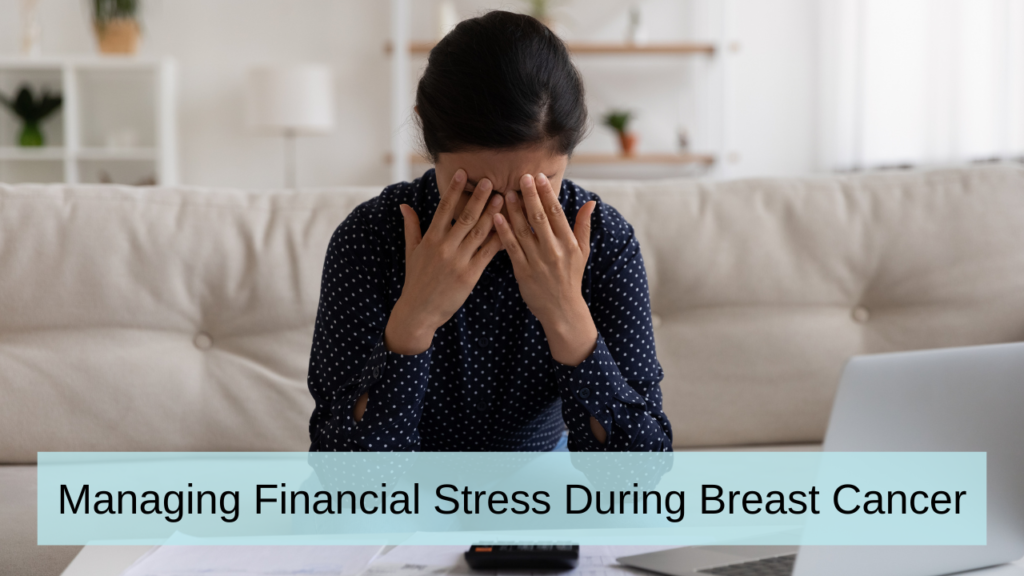
Common side effects of cancer treatment include nausea, hair loss, pain, and fatigue. However, the potential impact of the financial costs of care on the patient and their family—also referred to as financial toxicity—is a greatly under-appreciated, hidden “side-effect” that sets-in at the worst possible time. According to a recent study, nearly 80% of women experience financial stress during breast cancer treatment.
Fortunately, there are many resources dedicated to making cancer treatment more affordable. Here are some helpful tips for coping and managing financial stress during and after a cancer diagnosis:
1. Don’t be afraid to ask for help.
Say “yes” if friends or family offer to help. They can help you with paperwork, analyzing and paying bills, checking out your insurance, and gathering information about payment plans. If possible, bring someone who is helping you with your financial responsibilities, and have them ask lots of questions. Also, remember, family and friends often want to help, but often don’t know exactly how. Consider delegating anything you feel comfortable delegating, even in part, to take some of the weight off your shoulders.
2. Contact organizations for help with cancer-related costs.
There are many organizations that can help with expenses related to medical treatment, food, dental care, everyday living, legal resources, and more. Reach out to your HR department at work, or a hospital financial adviser for insight on how to get the most out of your insurance, including help with deductibles and co-pays.
3. Reach out to non-profit organizations.
Many national and local breast cancer organizations provide financial assistance to patients (and their families) to help decrease financial stress during breast cancer treatment. Ask your health care team if they have any recommendations. Other patients you meet can also be a very valuable resource for information on organizations they have found helpful themselves.
4. Tell your doctor immediately if you are concerned about the financial costs.
It’s important to be aware of upfront and out-of-pocket costs when discussing treatment options with your medical team. Your team may be a able to tailor your treatment in a more cost-effective way without negatively impacting your care. Knowing more about the costs that lie ahead is also very important so you can plan and budget accordingly.
Helpful Resources During and After Breast Cancer Treatment
There are many reputable organizations that can help you and your family after a breast cancer diagnosis. To access them, download the Breast Advocate App free here. Click on “Knowledge Center” and then “Resources”. There you will find links to organizations that can provide assistance in many ways, including financial:
Please also let us know of any organizations that you have found helpful. We are constantly adding reputable resources and would love to hear your recommendations!
